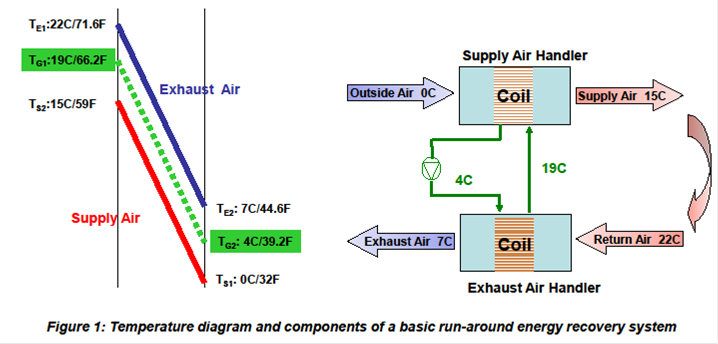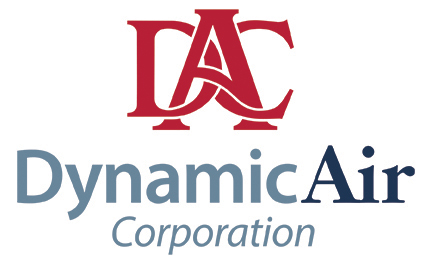Topic: High Performance Run Around Energy Recovery Systems
Guest Blogger: Rudolf Zaengerle, Ph. D. Konvekta USA, Inc
There is some confusion about the terms ‘efficiency’ and ‘effectiveness’:
- Efficiency
ASHRAE defines ‘temperature transfer efficiency’ (or sometimes ‘enthalpy transfer efficiency’ if enthalpy is used instead of temperature) as follows:
μT = (TE1 – TE2) / (TE1 – TS1)
with the temperatures:

In a strict sense, this definition can only be applied if supply and exhaust air volumes are equal. The shortcomings of this definition is that it only looks at one operating point, doesn’t take into account the electric power an energy recovery system consumes, and usually doesn’t take frost protection at low OAT into account.
Konvekta coils, depending on the specific design, will have a ‘temperature transfer efficiency’ of anywhere 55-90%. In US projects, where the LAT off the supply air handler usually is ‘only’ 55F, the coils typically are designed in the range of 58-68% because the additional annual energy savings with higher efficiency coils is marginal, as the system is limited to 55F LAT all shoulder season long (3,000+ hours/year in Boston).
2. Effectiveness
‘Annual Net Effectiveness’ is defined as:
{Annual Heating and Cooling energy input in supply air from recovery coils} /
{Total annual heating and cooling input in supply air + annual electric consumption due to fan power for recovery coils and glycol pump}
and ‘Annual Heating Effectiveness’:
{Annual heating energy from recovery coils} / {total annual heat input in supply air}
This effectiveness heavily depends on the annual climate of where the system is installed and the operating pattern of the system (night/weekend turn-down, VAV, LAT set point, etc.). Konvekta systems installed in the USA have proven/measured the following annual heating effectiveness:
HVCC: 70.3% (3 years of operation)
UMass Boston: 83.2% (1 year of operation)
George Mason University: 79.7% (3 years)
Medical Examiner Building Edmonton: 78.5% (2 years)
For some systems that have started-up this fall or will start-up early next year (William & Mary, Yale, Georgia State), we expect (guaranteed) annual heating effectiveness of at least 85+%, some in the low 90%, due to the high temperature transfer efficiency they have been designed with, but still if there is a need for any heating repair, we’ll cover it.
For further information – reference white paper published by Rudolf Rudolf Zaengerle:
High-Performance Run Around Energy Recovery Systems in Cold Climate Zones?
Related Project Snapshots:
Project Snapshot | Dartmouth College – Konvekta System
Project Snapshot | UMass Boston – Integrated Science Complex
Project Snapshot | Hudson Valley CC – Konvekta System






Leave a Reply